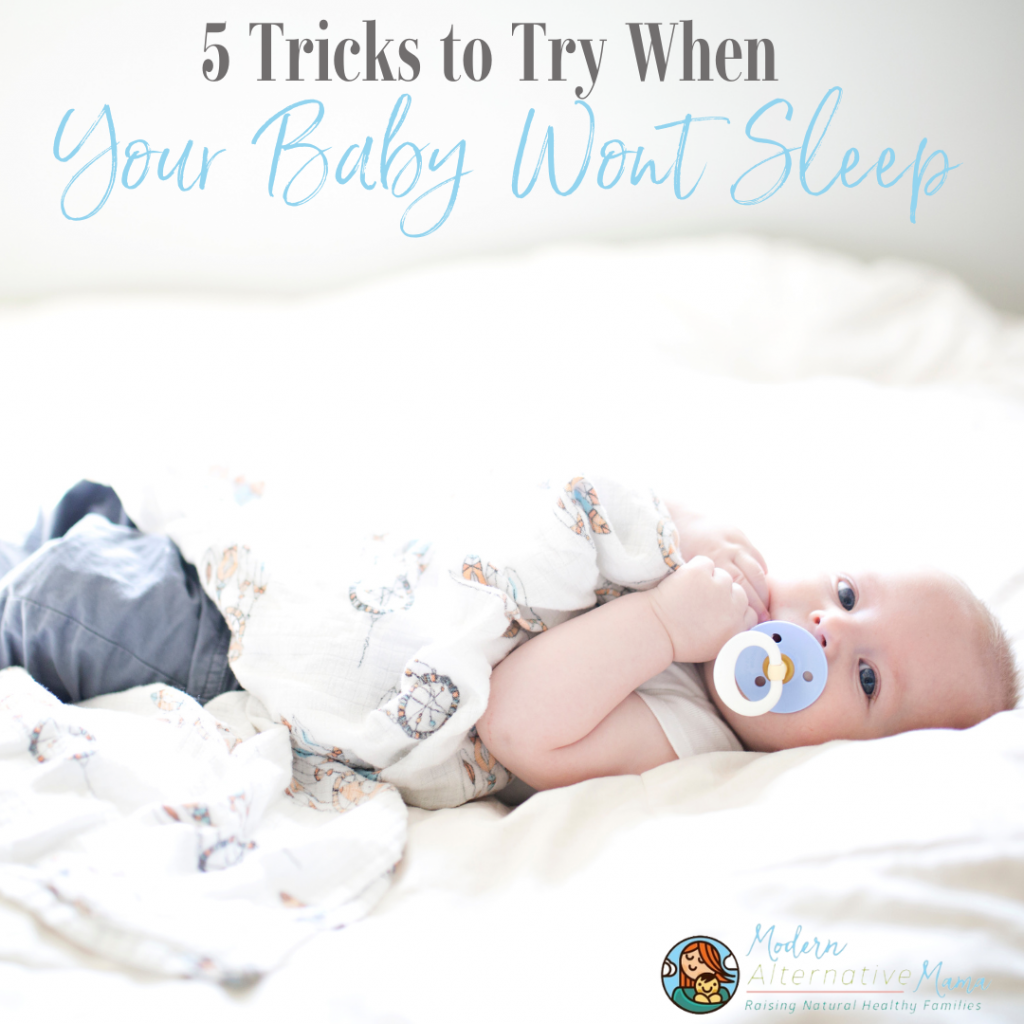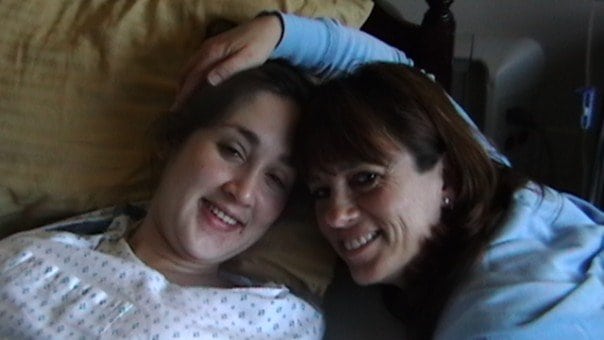By Jaimie &
Ahh, sleep. It often seems as elusive for newborns as it is for their parents. When your baby doesn’t sleep, neither do you! If you’re a new parent, chances are you’ve already encountered at least one occasion when it seemed that your baby just wouldn’t fall sleep.
We’ve been there! I totally understand.
If you’re not cosleeping, that may be a great place to start. Newborns have been with their mom every day for nine months; that restlessness may be a form of separation anxiety.
Nonetheless, whatever your sleeping arrangements may be, we’ve learned a few tricks to help baby sleep. Sometimes they work, sometimes they don’t, but they’re all worth a try!
Some of these suggestions are based on Dr. Harvey Karp’s advice in The Happiest Baby on the Block. These tips are not meant to be confused with sleep training, which we do not recommend.
#1: Noise
Some babies just won’t sleep well when it’s quiet (the same goes for many adults)! Many find sound machines to be soothing. We have found running water and the sound of the vacuum to be very helpful! Sometimes all it takes is turning on the vacuum or the faucet, and other times we have to combine this trick with another. But it usually helps!
#2: Movement
Newborn babies are especially used to almost constant movement; they moved with your body while in the womb. This can take various forms: rocking, swaying, bouncing (make sure to support baby’s head!), like a baby swing, or even a trip in the car. We live in an upstairs apartment, and sometimes, all it takes is the trip downstairs in his car seat for my son to fall asleep as we carry him down.
#3: Sucking
Babies suck instinctively, and it’s a comforting thing for them to do. Try offering to nurse (this is one of the many benefits of cosleeping). If they’re not hungry, give can them a pacifier or your finger if they haven’t learned to suck on their own fingers yet. Frequently this is all it takes for Jaimie to lull her son to sleep when he’s almost out, but he can’t quite relax all the way.
Keep in mind, that pacifiers are not for every baby, and it can confuse some breastfeeding babies. So it might not be the best idea for a VERY young baby. Other babies hate them. Still, some babies love them and are not remotely confused by the switch between breast and artificial nipple
#4: Swaddling
Newborns especially, benefit from swaddling, as it mimics the restrictive comfort of the womb. If wrapping up a baby burrito sounds daunting, you can buy various swaddlers designed to make the process a lot easier. Some babies really do not like swaddling, and some need to have their arms out, especially as they get older. They shouldn’t spend TOO much time swaddled, either.
#5: Change Positions
If your baby doesn’t stay asleep well on their back, try laying them on their side (or even their tummy; just make sure there are no loose sheets, blankets, or burp cloths anywhere near their face). A rolled-up receiving blanket tucked next to their back will help prevent them from rolling from their side to their back and waking themselves up.
Bonus: A Combination Deal!
Probably the most effective way Jaimie has found to get her son to sleep when he simply won’t fall asleep on his own is to put him in the Moby Wrap (which is much like swaddling) and vacuum her house (which combines movement and noise). Combining those things, he’s usually out in ten minutes or less, and he usually stops crying as soon as she turns on the vacuum. Plus, her carpets get vacuumed, so it’s a win-win!
Additional Resources:
There are so many resources available on the internet regarding this topic, so we figured we’d give you a list to jumpstart your baby’s sleep journey:
Your baby will eventually fall asleep and stay asleep on their own! It might seem like an eternity away, but you’ll get there. In the meantime, try some of these tricks and when your baby finally does get to sleep, reward yourself with a nap!







